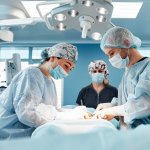
News • Posture assessment technology
Wearables to spare surgeons from back pain
Surgeons often suffer from back and neck pain, due to inadequate posture during surgery. A new study uses wearable technology to prevent muscoloskeletal conditions from cutting short medical careers.


























